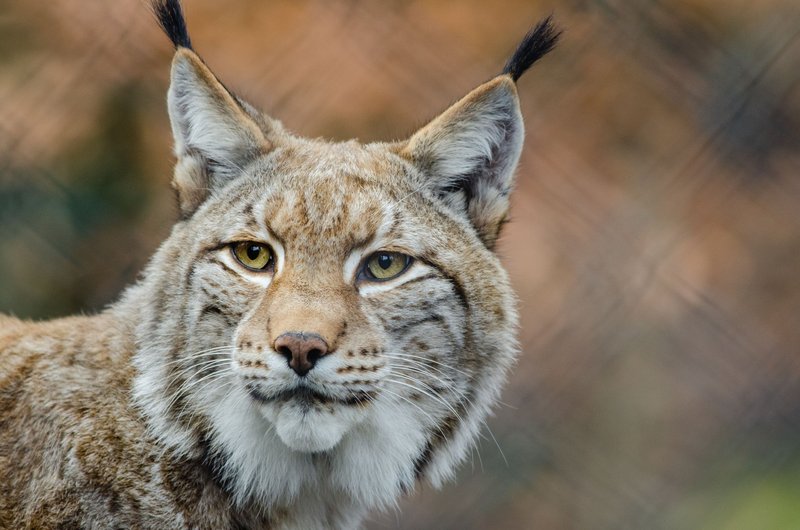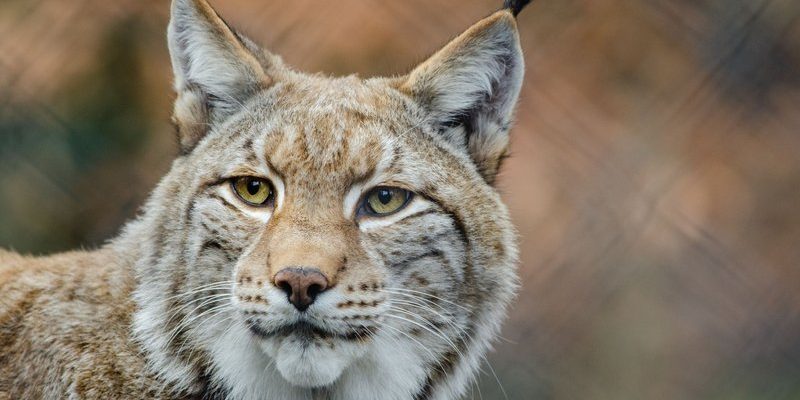
Lynx are some of nature’s most fascinating wild cats, often described as elusive and mysterious. With tufted ears, short tails, and a captivating gaze, these animals are an intriguing part of our world. Imagine catching a glimpse of one quietly stalking through a snow-covered forest, its fur perfectly blending with the winter landscape. That’s the beauty of the lynx.
You might be wondering what makes lynx so special compared to other big cats. For starters, they’re known for their incredible sense of hearing and remarkable agility. Each species of lynx has adapted beautifully to its environment, from the dense forests of Canada to the rugged terrain of Europe. In this article, we’ll explore everything from their diet and habitat to their behavior and conservation status. So, grab a cup of coffee, get comfortable, and let’s delve into the world of the lynx!
Species of Lynx
There are four main species of lynx: the Eurasian lynx, the Canadian lynx, the Iberian lynx, and the bobcat. Each one has unique characteristics that make it distinctive, yet they all share certain features, like their tufted ears and short tails. Let’s take a closer look at each species.
Eurasian Lynx
The Eurasian lynx is the largest of the four species and can be found across Europe and Asia. This cat can weigh up to 30 kilograms (about 66 pounds), making it a formidable predator in its habitat. With a beautiful spotted coat, it’s an expert at blending in with the forest floor.
This species is known for its adaptable diet, which can include everything from small mammals to larger prey like deer. Because of its size and strength, the Eurasian lynx is often at the top of the food chain in its environment. They are primarily solitary animals, marking their territory with scents to ward off others.
Canadian Lynx
The Canadian lynx is smaller, weighing around 8-12 kilograms (18-26 pounds). This species primarily inhabits the boreal forests of Canada and parts of Alaska. One of its most fascinating traits is its long legs and large paws, which act like snowshoes, allowing it to navigate snowy terrains easily.
These lynx mainly feed on snowshoe hares, which make up a significant portion of their diet. Their hunting success is closely tied to hare populations, and when hare numbers decline, so do the lynx. This interdependence showcases the delicate balance of nature.
Iberian Lynx
The Iberian lynx is the most endangered of the species, found primarily in Spain and Portugal. With sleek bodies and shorter legs compared to other lynx, they weigh about 8-14 kilograms (18-31 pounds). Their fur has a beautiful spotted pattern, but these lynx are in decline due to habitat loss and reduced prey availability.
They primarily hunt European rabbits, which have also seen a decrease in numbers. Conservation efforts are underway to protect the Iberian lynx, as they play a crucial role in their ecosystem. Numerous organizations are working hard to ensure their survival, making this an inspiring story of wildlife resilience.
Bobcat
The bobcat, sometimes considered a lynx due to its similar physical traits, is smaller and more adaptable. It can be found across North America. Weighing between 6-14 kilograms (13-30 pounds), it’s a versatile hunter, preying on various animals—from rodents to birds.
Bobcats are known for their distinctive “bobbed” tails and tufted ears. They are highly adaptable and can thrive in diverse habitats, including forests, swamps, and even suburban areas. Their ability to adjust makes them a common sight, unlike their more elusive relatives.
Physical Characteristics
The lynx is easily identifiable due to its unique physical features. One of the most notable aspects is its tufted ears; these tufts help in enhancing their hearing, allowing them to detect prey, even in thick underbrush. Their large paws are designed for traversing snowy terrains, a trait that distinguishes them from many other wild cats.
Another key feature is their striking facial ruff, which adds to their expressive look. This ruff of fur can help amplify sounds and might even serve as camouflage. The lynx’s fur is generally spotted, which provides excellent concealment in their environments, ranging from snowy landscapes to dense forests.
Habitat and Range
Lynx primarily inhabit forests, though their range can vary significantly. The Eurasian lynx favors vast forested areas, thriving in the boreal zone. In contrast, the Canadian lynx is found in northern regions, particularly in boreal forests where snowshoe hares are plentiful.
The Iberian lynx, despite its endangered status, is mostly found in the Mediterranean forests of Spain and Portugal. Habitat destruction has dramatically reduced their range, making conservation efforts urgent. Meanwhile, the bobcat is the most adaptive, residing in both rural and urban settings across North America.
Diet and Hunting
Lynx are primarily carnivorous and are known for their excellent hunting skills. Their diet mainly consists of small to medium-sized mammals. For instance, the Canadian lynx primarily targets snowshoe hares, while the Iberian lynx prefers rabbits. Their hunting strategies are tailored to their habitat and prey choices.
These cats rely on stealth and patience. They often stalk their prey silently before pouncing, using their keen sense of hearing and sharp eyesight to locate them. Lynx have powerful legs that allow them to leap impressive distances, making them efficient hunters.
Behavior and Social Structure
Lynx are generally solitary animals, preferring to live alone rather than in groups. They have defined territories, which they mark using scent and vocalizations. Their territories can vary in size depending on the species and the availability of prey. For example, territories of the Eurasian lynx can span up to 100 square kilometers.
Interactions between lynx are often limited to mating seasons or when a mother is raising her young. Typically, female lynx are the primary caregivers, nurturing their kittens until they can hunt independently. This nurturing period can last for several months, during which the mother teaches her cubs valuable survival skills.
Reproduction and Lifespan
Lynx usually breed once a year, typically in early spring. After a gestation period of about 60-70 days, female lynx give birth to 1-6 kittens. These kittens are born blind and rely entirely on their mother for sustenance and protection during their first few weeks of life.
The lifespan of lynx in the wild is about 10-12 years, but they can live longer in captivity. Factors such as habitat conditions, availability of prey, and threats from humans or other predators can significantly impact their survival in the wild.
Conservation Status
The conservation status of lynx varies by species. The Iberian lynx is critically endangered, primarily due to habitat loss and declining rabbit populations. Conservationists are working tirelessly to restore their habitats and recover their numbers through breeding programs and habitat preservation.
The Canadian lynx, while not endangered, still faces challenges from climate change and habitat destruction. The Eurasian lynx is more stable in population but is affected by hunting and habitat encroachment. Awareness and conservation efforts are crucial for ensuring a brighter future for these incredible cats.
Interesting Facts about Lynx
| Species | Eurasian Lynx |
| Weight | Up to 30 kg (66 lb) |
| Habitat | Boreal forests, mountainous areas |
| Diet | Small mammals, deer |
| Lifespan | 10-12 years in the wild |
| Conservation Status | Varies by species, Iberian lynx critically endangered |
FAQ
What is a lynx’s favorite food?
Lynx primarily prey on small to medium-sized mammals. For instance, the Canadian lynx has a strong preference for snowshoe hares, while the Iberian lynx often hunts rabbits. Their diet can vary based on the season and the availability of prey, showcasing their adaptability as hunters.
Are lynx dangerous to humans?
Generally, lynx are not considered a threat to humans. They tend to be elusive and prefer to avoid contact. However, like any wild animal, they could act defensively if threatened. It’s important to respect their space and not approach them in the wild.
How do lynx communicate with each other?
Lynx communicate through a variety of vocalizations and scent markings. They use sounds like growls, hisses, and even yowls to express themselves, especially during mating seasons or territorial disputes. Additionally, they mark their territory with scents to ward off intruders.
What adaptations help lynx survive in the wild?
Lynx have several adaptations that aid their survival. Their large paws help them run across snow, while their tufted ears enhance their hearing abilities, allowing them to detect even the faintest sounds of prey. Their beautiful spotted coats provide excellent camouflage in their natural habitats.
Where can you find lynx in the wild?
Lynx can be found in various regions around the world. The Eurasian lynx roams throughout Europe and Asia, the Canadian lynx mainly inhabits Canada and Alaska, while the Iberian lynx is primarily located in Spain and Portugal. Bobcats, on the other hand, have a wide range across North America.
What is the biggest threat to lynx populations?
The biggest threats to lynx populations include habitat loss due to urban development, deforestation, and climate change. Additionally, hunting and decreased prey availability can significantly impact their populations. Conservation efforts are crucial to address these threats and preserve their habitats.
How long do lynx live in the wild?
In the wild, lynx typically live around 10-12 years, but this can vary based on factors such as habitat conditions and threats from predators. In captivity, they may live longer due to better living conditions and regular veterinary care.
Do lynx have any natural predators?
Adult lynx have few natural predators due to their size and position in the food chain. However, young lynx can fall prey to larger predators like wolves or bears. Human activities, such as hunting and habitat destruction, pose significant risks to their populations.
How can we help protect lynx species?
Protecting lynx species involves supporting conservation efforts, spreading awareness about their plight, and advocating for habitat preservation. Simple actions like supporting wildlife organizations or participating in local conservation projects can significantly impact their survival.
Are lynx solitary or social animals?
Lynx are primarily solitary animals. They tend to live alone and establish their territories, marking them with scents. Social interactions typically occur during mating seasons or when mothers are raising their young. This behavior helps them maintain a balance within their habitats.
Can lynx be kept as pets?
Keeping a lynx as a pet is not advisable and is illegal in many places. Lynx are wild animals with specific needs that cannot be met in a domestic setting. They thrive in their natural habitats, where they can exhibit their natural behaviors and instincts.
What role do lynx play in their ecosystem?
Lynx play a critical role in their ecosystems as top predators. By controlling populations of their prey, they help maintain a balanced ecosystem. Their presence indicates a healthy environment, and protecting them also safeguards many other species that share their habitat.

